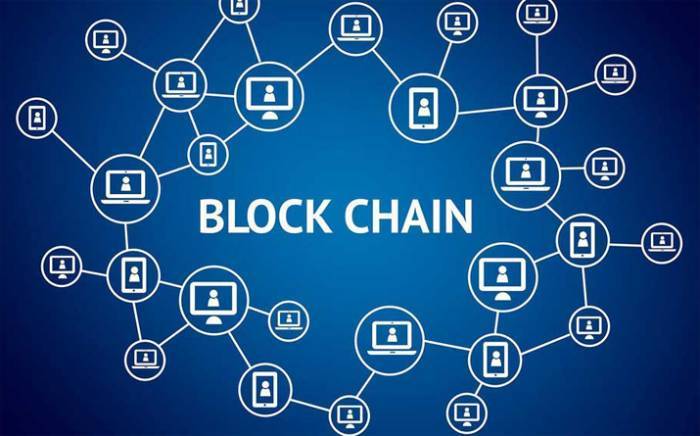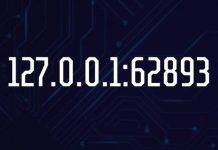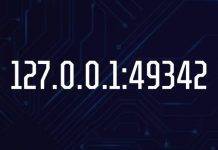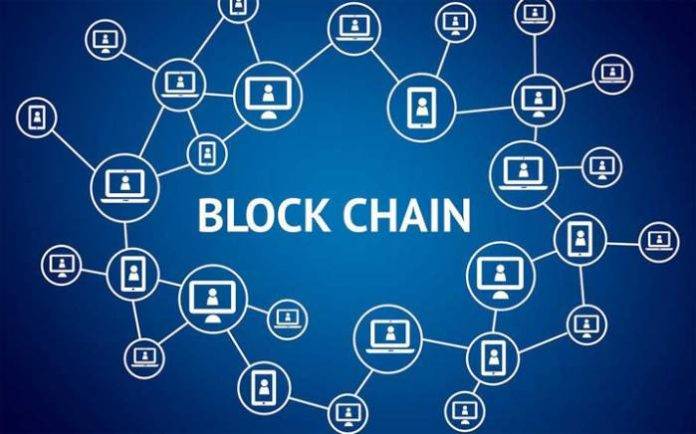Blockchain adoption is gaining momentum as it continues to prove itself as a technology that can act as the foundation for many other emerging technologies, such as artificial intelligence (AI), Web3 and the metaverse. However, it is not only beneficial to these new technologies as blockchain can also significantly improve digital systems and make processes faster and less costly.

In fact, according to a 2022 report by blockchain research firm Blockdata, “81 of the Top 100 Public Companies are using blockchain technology.” Banking and finance, entertainment, healthcare, supply chain, construction, and accounting are just some of the industries that are starting to reap the benefits of blockchain.
This is mirrored in a forecast by Markets and Markets, which stated that the global blockchain market will balloon to $67.4 billion by 2026. The report cites the reason for this growth as the “extensive use of blockchain solutions in banking and cybersecurity, high adoption of blockchain solutions for payment, smart contracts, and digital identities, and rising government initiatives.”
Even with these positive statistics and facts, there remains a question of whether or not blockchain is a sustainable technology given its extraordinarily high energy consumption. Because of this, misunderstandings have spread; and blockchain is considered by many as bad for the environment.
However, this is simply not the case. In fact, blockchain can even benefit the renewable energy industry and help in the global fight against climate change. In order for this statement to be fully explained, it is imperative to first understand what blockchain really is and what it can do.
What is Blockchain?
Blockchain is the technological foundation of almost all cryptocurrencies. Bitcoin is actually its first practical implementation. Basically, blockchain is a ledger where data is recorded as transactions contained in data blocks. Once a block is full, it is attached to a previously completed block, forming a chain. The number of transactions contained in a block depends on its block size.
Blockchain is both decentralized and distributed because there is no central authority or administrator in control of the data and all nodes or miners on the network have a copy of the history of all transactions. Because transactions are timestamped and stored in chronological order, data can easily be verified and tracked. A public blockchain also provides transparency as anyone can access and verify records.
A blockchain typically runs on a Proof of Work consensus mechanism. This means that each miner has to solve a complex mathematical algorithm in order to be able to add a block on the chain. This requires specialized equipment and computers that have enough hash power to solve the algorithm.
This is why mining facilities consume so much energy. A mining facility also has to be in a temperature-controlled environment in order to prevent the equipment from overheating as they run 24/7.
However, Proof of Work is necessary to blockchain. On top of promoting healthy competition, it allows for a consensus between miners that all must agree before a change in a transaction is made, which makes the network secure and nearly impossible to hack.
What Makes Blockchain Sustainable?
Given that a blockchain that runs on Proof of Work consumes an exceptional amount of electricity, how does it become sustainable and eco-friendly? First off, a blockchain’s energy consumption is measured in the amount of electricity it uses up to complete one transaction. In this sense, a blockchain that processes a small number of transactions will definitely have a high energy consumption.
On the other hand, a blockchain that can scale to continuously increase its transaction capacity or throughput, as well as its block size, constantly lowers its energy consumption and increases its sustainability. Take BTC and BSV Blockchain, for example. Because BTC is an unscalable blockchain, it completes 1MB block sizes, which contains about 2,000 transactions, and processes a maximum of seven transactions per second (TPS).
Due to its capacity to scale on demand, the BSV Blockchain has 4GB blocks that consist of two to 3 million transactions and a throughput of 50,000 to 100,000 TPS. According to a blockchain sustainability index, the most recent energy consumption of BTC is at 332.52 kWh per transaction of BTC while BSV is only at 0.11 kWh/txn. The carbon footprint of both blockchains amount to 66.50 kg CO2e/txn and 0.02 kg CO2e/txn, respectively.
As the BSV Blockchain scales, exabyte-sized blocks and billions of TPS can be realistically achieved in the future, further reducing its energy consumption. This is why a scalable blockchain is energy efficient and eco-friendly.
A miner earns through transaction fees and block rewards, which are newly minted coins. For instance, Bitcoin rewards each miner for successfully adding a block with 6.25 coins. This number is halved every four years, and the next halving on April 20, 2024 will reduce block rewards to 3.125 coins.
A scalable blockchain is sustainable because even when the rewards continue to be halved until there is nothing left, miners can still remain in business because the sheer volume of transactions will bring them more than enough profit. Ultimately, scaling is the answer to blockchain’s energy consumption and sustainability.
What Are the Benefits of Blockchain?
With its capabilities, the benefits of blockchain include the immutable recording of data, scalable data storage, secure and hacker-proof network, transparency of records, and an extremely high transaction capacity that can surpass popular payment processors like VISA.
These benefits can be used to solve real-world problems. A blockchain-based platform can easily track a product in all stages of the supply chain without the need for third-party reporting. This will ensure quality and prompt delivery of products, as well as the identification of areas for improvement.
Blockchain also made possible triple-entry accounting (debit, credit and timestamped records) that provides added transparency and security. The same benefits also apply to the insurance industry, enabling better protection of records against fraud. A blockchain-based global healthcare database, on the other hand, will give access not only to detailed patient records, but to consolidated data that will be extremely useful in the research and cure of diseases.
These are but some of the practical ways that blockchain can be used in the real world, providing real benefits and solving real problems. Now, the question remains, can these benefits also be applied to the renewable energy industry, which is crucial in tackling the global crisis of climate change?
Can Blockchain Improve the Renewable Energy Industry?
Any type of digital system needs a way to record and store data, and this is where the strength of blockchain lies—in being able to provide immutability, security and transparency of records. Because of this, it streamlines processes and limits the use of intermediaries, which then increases efficiency, reduces overhead costs and maximizes profits.
Although it has been suggested by experts for blockchain to use renewable energy in order to reduce energy consumption, it is still not possible at the moment. This is because renewable energy has a fluctuating supply and demand, and a mining facility has to operate without power interruptions.
On the other hand, blockchain can help renewable energy become more efficient, stable, secure and affordable, which will greatly help in its mass adoption. How so? For one, blockchain can be used in carbon offsets, which refer to certificates of carbon credits that can be traded between companies to reduce their carbon footprint.
For instance, company A has removed 10 units of carbon from its emissions, it creates a carbon offset, which company B can buy to lower down its carbon footprint. But carbon offsetting has been criticized for its inefficiency. Climate Claims Watch, an organization that aims to act as a watchdog for corporate carbon footprint, cites poor offsetting ambition, creative accounting and zero accountability as the major factors that cause carbon offsetting to be largely ineffective.
A blockchain-based platform will be able to immutably and accurately enter all carbon offset transactions into a secure and tamper-proof database and provide transparency of records that will enable accountability. With these two issues resolved, relevant government agencies will not only be able to monitor if a company is cheating, but they can also more accurately gauge the effectiveness of carbon offsetting and make the necessary adjustments.
Blockchain technology can also make way for an energy platform that allows for households and businesses to buy and sell renewable energy from each other. In fact, Australia already has one such platform that allows solar energy trading. With immutable and public records, the platform is able to easily monitor users’ energy consumption and production, as well as all transactions.
The biggest problem of renewable energy is its erratic supply and demand. With blockchain, grid administrators will be able to monitor renewable energy production and consumption, consequently balancing its supply and demand in near real time.
And because everything runs automatically on the blockchain, costs will also be substantially lessened compared to running conventional grids. This will make the price of renewable energy more affordable to both homeowners and businesses; thus, making it reach mainstream use. The more people use renewable energy, the faster the world will become carbon neutral.
Climate change is not a myth nor is it some futuristic and apocalyptic problem that is not relevant today. Its harmful effects are already being felt, and many people and animals have died because of it. Climate change needs to be addressed now.
Renewable energy is at the center of the solution, and blockchain can significantly aid in the mass adoption of renewable energy. The technologies needed to fight against climate change are here, time should not be wasted in making full use of them.







































